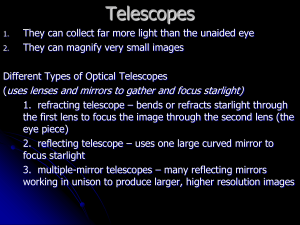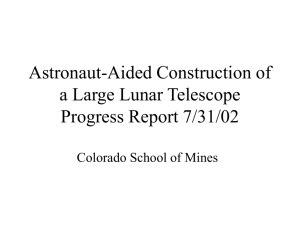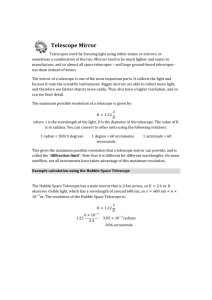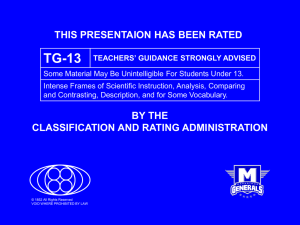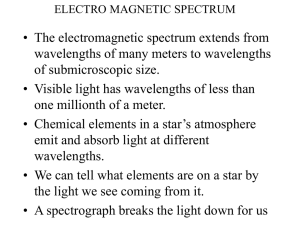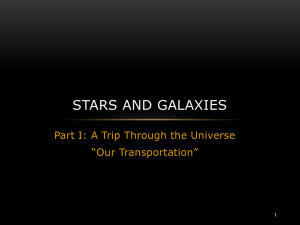Telescope I & II Supplementary Questions
advertisement
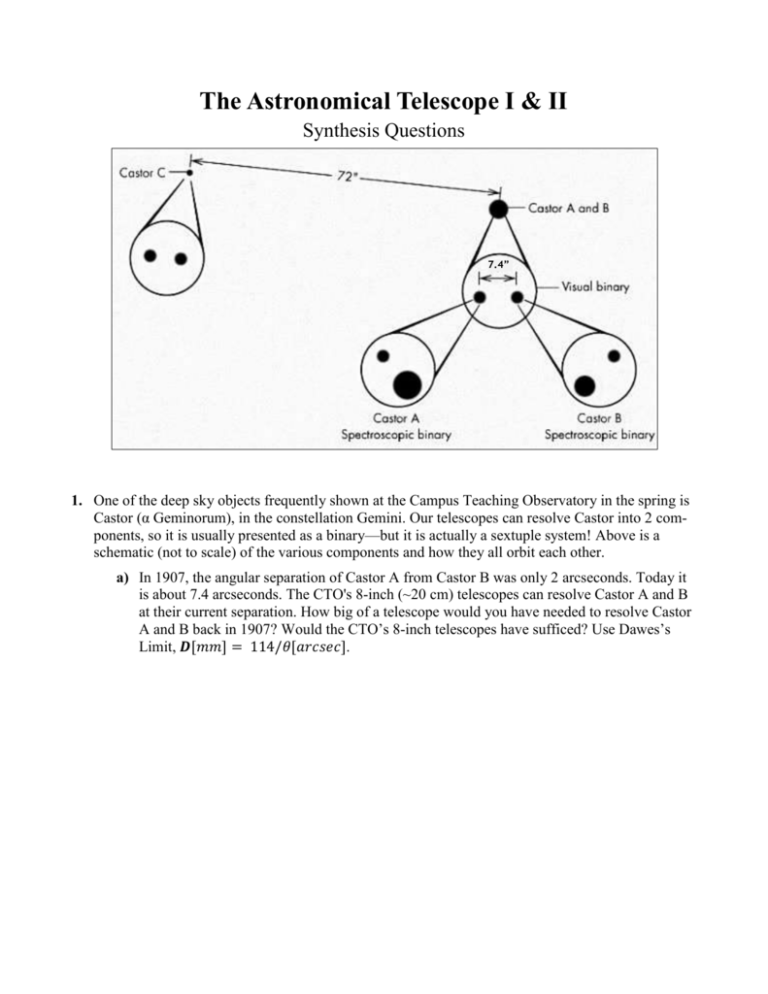
The Astronomical Telescope I & II Synthesis Questions 7.4” 1. One of the deep sky objects frequently shown at the Campus Teaching Observatory in the spring is Castor (α Geminorum), in the constellation Gemini. Our telescopes can resolve Castor into 2 components, so it is usually presented as a binary—but it is actually a sextuple system! Above is a schematic (not to scale) of the various components and how they all orbit each other. a) In 1907, the angular separation of Castor A from Castor B was only 2 arcseconds. Today it is about 7.4 arcseconds. The CTO's 8-inch (~20 cm) telescopes can resolve Castor A and B at their current separation. How big of a telescope would you have needed to resolve Castor A and B back in 1907? Would the CTO’s 8-inch telescopes have sufficed? Use Dawes’s Limit, 𝑫[𝑚𝑚] = 114/𝜃[𝑎𝑟𝑐𝑠𝑒𝑐]. b) The Albireo system (Beta Cygni) in the constellation Cygnus (The Swan) is a very popular multiple-star shown at the Campus Teaching Observatory (CTO) during the fall is. Telescopes at the CTO resolve Albireo into two stars, one yellowish-orange (Albireo A, an unresolved binary) and the other blue (Albireo B). Locals sometimes call Albireo “The Gator Star” because of its components’ colors. Using the apparent magnitudes given in the table below and the equation 𝑏2 ⁄𝑏1 = 10(𝑚1 −𝑚2 )/2.5 (pay attention to the subscripts!), compute the brightness ratio between the two stars. Star Apparent Magnitude Brightness ratio between two stars Albireo A +3.2 Albireo B +5.2 2. The most recent Public Policy Polling survey on conspiracy theories estimates that about 7% of Americans still think the Apollo Moon landings were faked. Many cite the inability of Earth-based telescopes or even the Hubble Space Telescope to see the equipment left behind (never mind all the photos from the Lunar Reconnaissance Orbiter, LRO). The landing stage of the Lunar Module from Apollo 11, 12, and 14 through 17 are all still on the Moon. If the larger dimension of the landing stage of the Lunar Module is 9.4 meters, how big of a telescope would you need to resolve it at the typical Earth-Moon distance of 384,400 km? Ignore here the distortion caused by the terrestrial atmosphere. Consider only the theoretical resolution or the diffraction limited resolution. Follow the steps below to find out. a) 1st step. Use the resolution relation 𝜽[𝑎𝑟𝑐𝑠𝑒𝑐] = 2.063 × 105 × (ℎ/𝐿) to compute the angular size of the Lunar Module. Remember that h and L must be in the same units. b) 2nd step. Plug that answer into the Dawes Limit formula 𝑫[𝑚𝑚] = 114/𝜃[𝑎𝑟𝑐𝑠𝑒𝑐] and convert your answer to meters. c) The largest single mirror telescope is the Gran Telescopio de Canarias (GTC) with an aperture of 10.4 meters. The Hubble Space Telescope has an aperture of 2.4 meters. Based on your result, should either of these two telescopes be able to resolve the Lunar Module?



